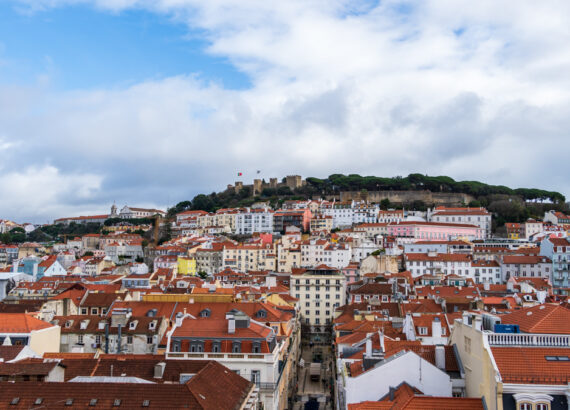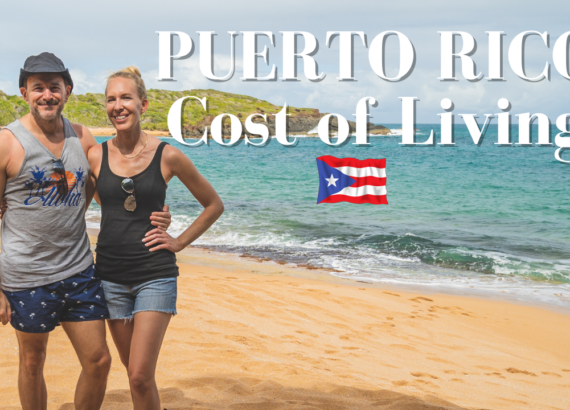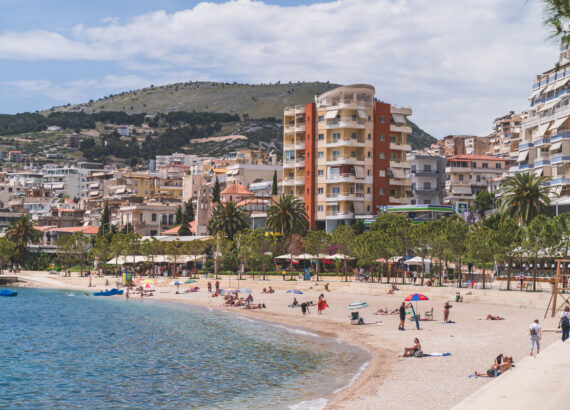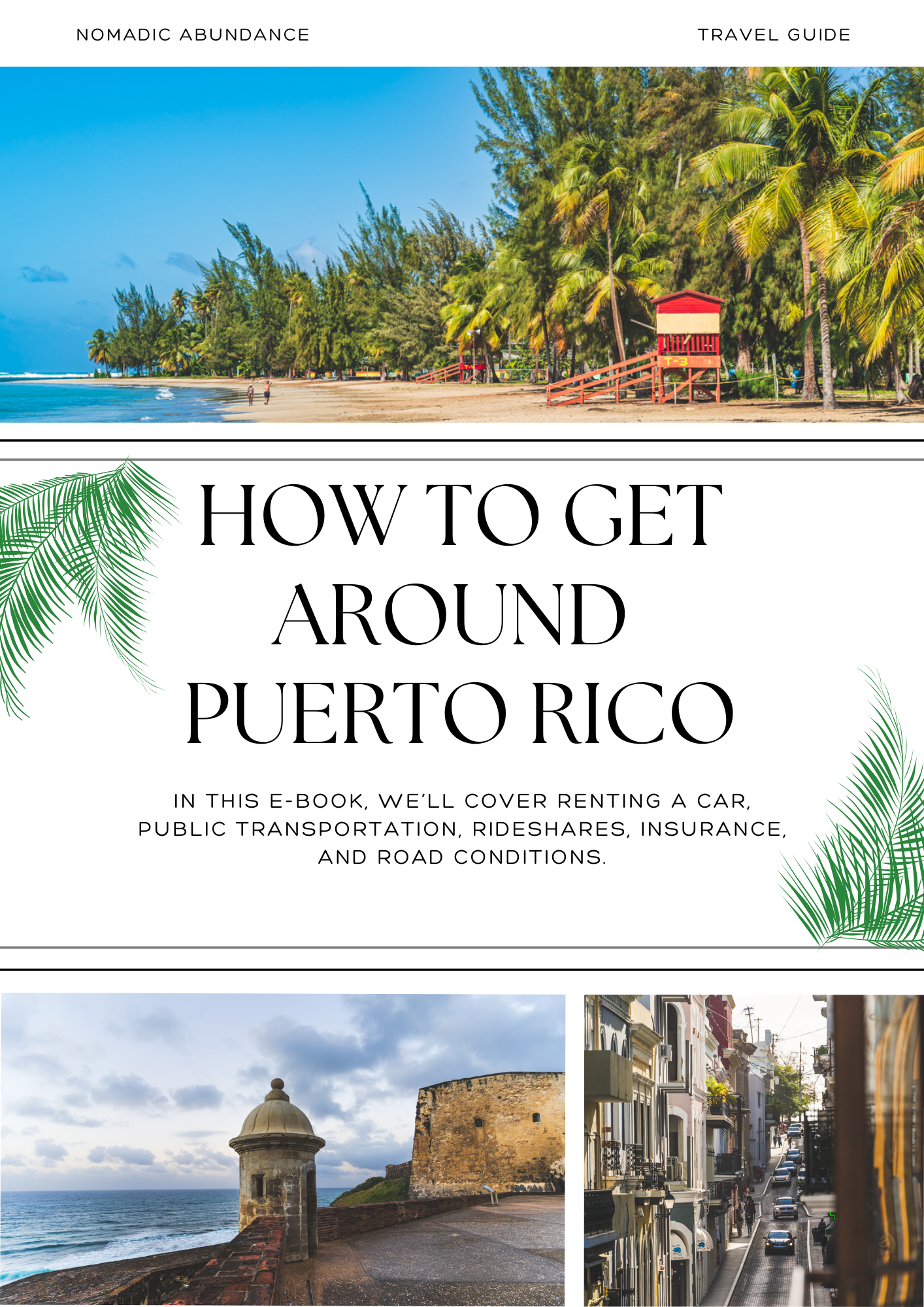The Pros and Cons of Slow Travel vs. Fast Travel: Finding Your Ideal Pace
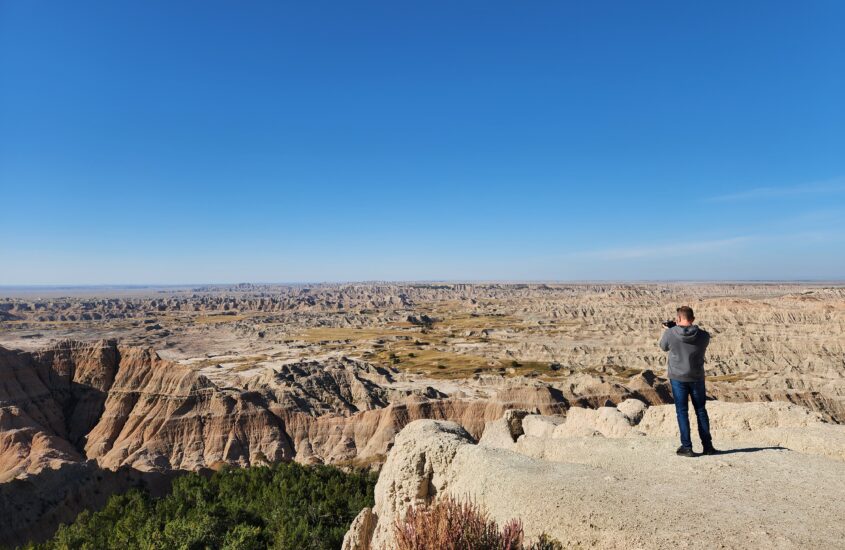
How to Find Your Ideal Travel Pace
When it comes to full-time travel, one of the most crucial decisions to make is whether to opt for fast travel or slow travel. As seasoned full-time travelers for the past four years, we have had the privilege of experiencing both slow travel and fast travel. However, based on our personal journey as content creators and YouTubers, we have found that slow traveling aligns seamlessly with our lifestyle.
Both options have their own unique advantages and drawbacks, and finding the ideal pace for your journey depends on your personal preferences and priorities. Are you working while traveling or are you retired? Are you on a tight budget or maybe money isn’t that big of an issue, maybe time is? All of these factors will play a vital role in how you decide to live a more abundant life through full time travel.
Slow Travel Vs Fast Travel
Fast travel allows you to cover more ground in a shorter period, exploring a wide range of destinations and experiencing different cultures. It also offers a great deal of flexibility.
On the other hand, the slow travel experience is more immersive. It gives you the opportunity to truly connect with local communities, develop relationships with other travelers, locals, or expats, and deeply understand the destination you’re living in. Think of it as another way of slow living, whether it’s for a month, six months or longer. It’s a chance to embrace a slower pace, soak in the local atmosphere, and create lasting memories.
The Benefits of Fast Travel
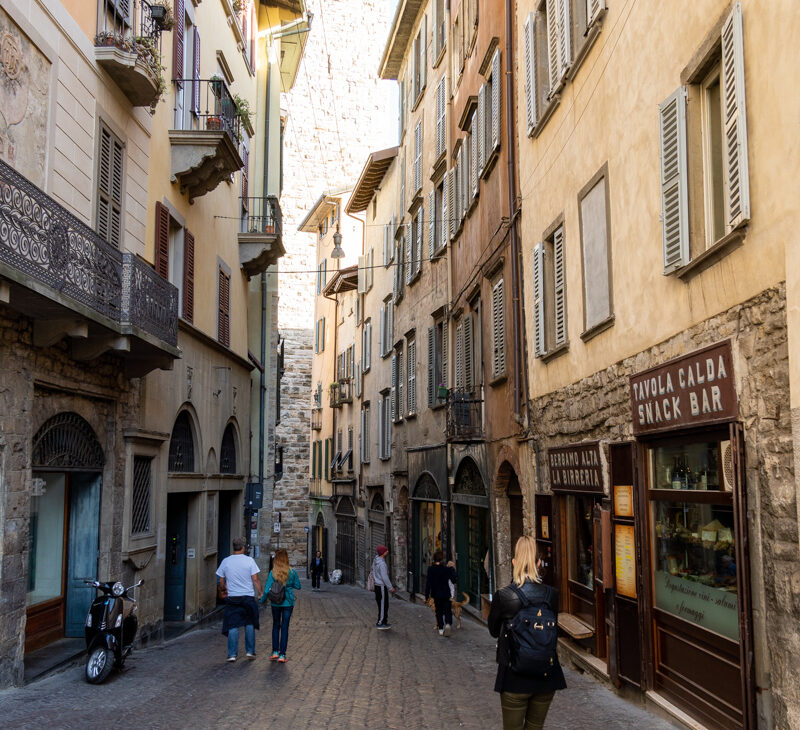
Fast travel offers the opportunity to maximize the number of destinations you can visit within a limited time frame. This means you can cover more ground and explore multiple places in a shorter period. The flexibility and convenience of fast travel also give you the freedom to plan your itinerary more efficiently, ensuring you get the most out of your trip.
Like most, we have extensive experience with fast travel, particularly when we had full-time 9-5 jobs and limited vacation time. For years, Michelle was only granted two weeks of vacation, so we had to optimize our time in each destination and fit in as much sightseeing as possible.
Time efficiency
With fast travel, you can make the most out of your trip by maximizing the time you have to create unforgettable memories and experiences. This means that you can pack a lot in during a short amount of time trying out different cuisines, visiting famous landmarks, and visiting multiple destinations.
Covering more destinations
By choosing fast travel options, you can explore multiple cities or countries in a single trip. This gives you the chance to witness diverse cultures and see more places during your travels. With fast travel, it’s easy to move from one destination to another, immersing yourself in various experiences and environments. It allows you to pack in a multitude of experiences within a shorter timeframe.
For example, on a ten-day trip to Ireland, we visited Dublin, Galway, Connemara, and Cork. It was a whirlwind tour, but we covered a lot of ground and created amazing memories.
Yes, we were tired at the end, but looking back, we’re grateful for all the incredible experiences we had.
Flexibility
Fast travel provides flexibility in terms of adjusting your plans according to unforeseen circumstances. Whether it’s a sudden change in weather or a last-minute change in your itinerary, You are able to modify your plans and adapt to the situation. It offers more flexibility in scheduling your travel as well.
Unlike slow travel, where you may be bound by months long accommodations commitments, or fixed schedules, fast travel gives you the freedom to make quick changes and make the most out of your trip.
The Downsides of Fast Travel
While fast travel offers a range of benefits, there are also some drawbacks that travelers should consider. One downside of fast travel is that it can lead to a lack of immersion in the local culture and environment. When you’re constantly on the move, it’s difficult to truly connect with the people and places you visit.
Fast travel often means missing out on local experiences as well. Rushing through destinations can prevent you from fully exploring and discovering areas that may be off the beaten path.
In addition to the potential lack of immersion, another disadvantage of fast travel is the increased stress it can cause. Trying to fit too many activities or destinations into a limited amount of time can leave you feeling overwhelmed and exhausted.
Another drawback of fast travel is the risk of burnout. It’s not uncommon to hit a wall and feel mentally or physically exhausted from constant movement.
Lastly, one of the biggest drawbacks to fast travel in our opinion is cost. Typically fast travel can cost quite a bit more than slow travel. Frequently moving from one destination to another increases transportation and accommodation costs.
Lack of immersion
When you’re constantly hopping from one destination to another, you may miss out on the opportunity to fully immerse yourself in the local culture. Slow travel allows for a deeper understanding and appreciation of your surroundings. By taking things at a slower pace, you have more opportunities to interact with locals and learn about their way of life.
Fast travel often involves staying in touristy areas, which may not give you an authentic experience of a place. However, when you slow down and embrace a more leisurely travel style, you can venture off the beaten path and explore the lesser-known destinations. This allows you to truly connect with the local community and gain a richer cultural experience.
Missing out on local experiences
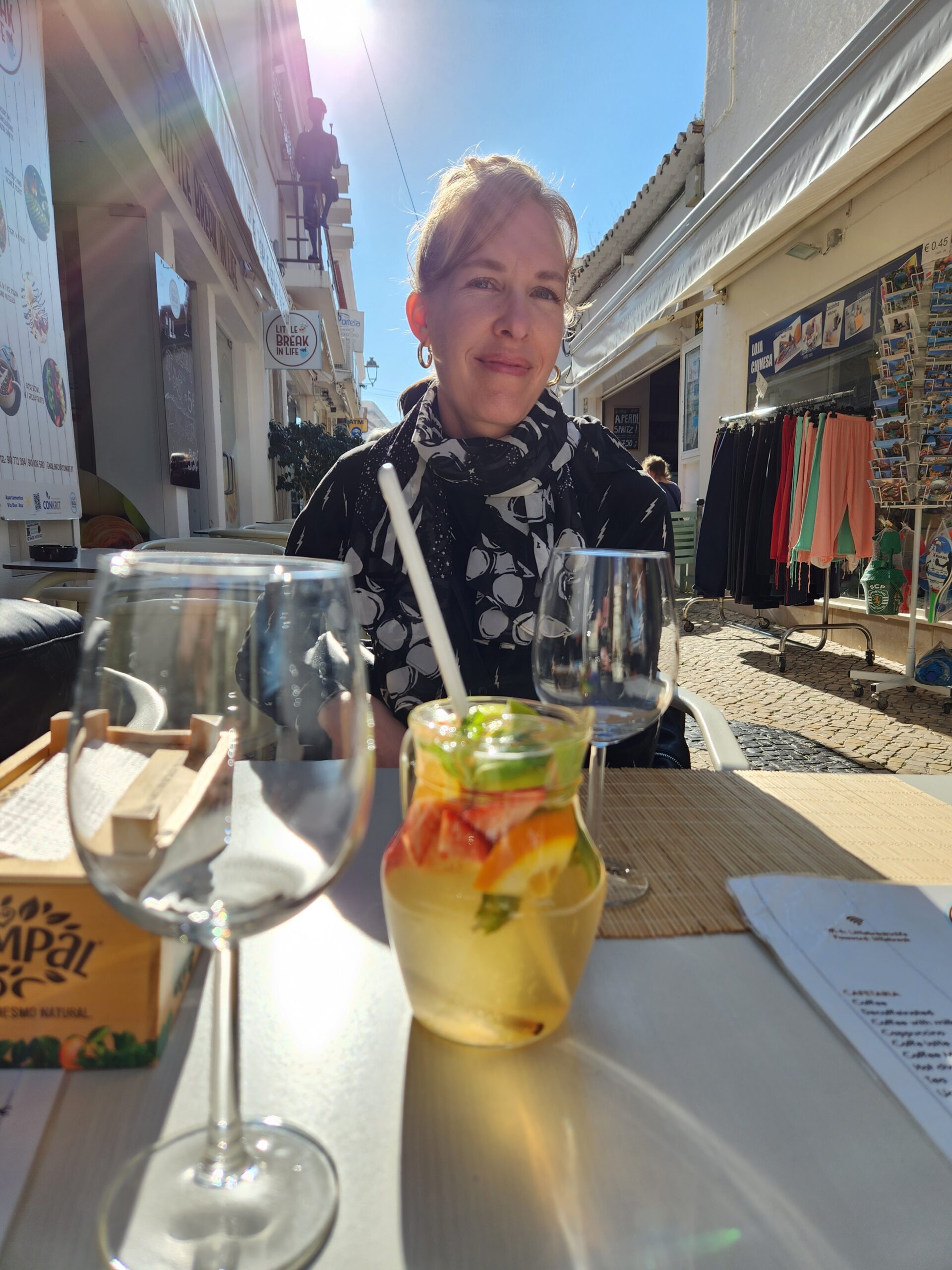
By rushing through destinations, you may miss out on unique and out of the way experiences that are not included in typical travel itineraries. Slow travel allows for serendipitous discoveries and spontaneous adventures.
When relying too much on fast travel, you may miss out on valuable opportunities to engage with locals, resulting in unique and memorable experiences like being welcomed into someone’s home for a traditional meal or taking part in a local celebration. It’s through these connections that you can gain a deeper understanding of a culture and create memories that will last a lifetime.
If you have a tight schedule and need to maximize your time exploring or getting to your next destination, you might find yourself eating on the go and prioritizing your travel itinerary over leisurely lunches or dinners.
Enjoying a meal is something we really try to prioritize while slow traveling. Not only does it give you the chance to fully appreciate the delicious flavors, but it also allows you to take in your surroundings and really soak up the vibe of the place.
Increased stress
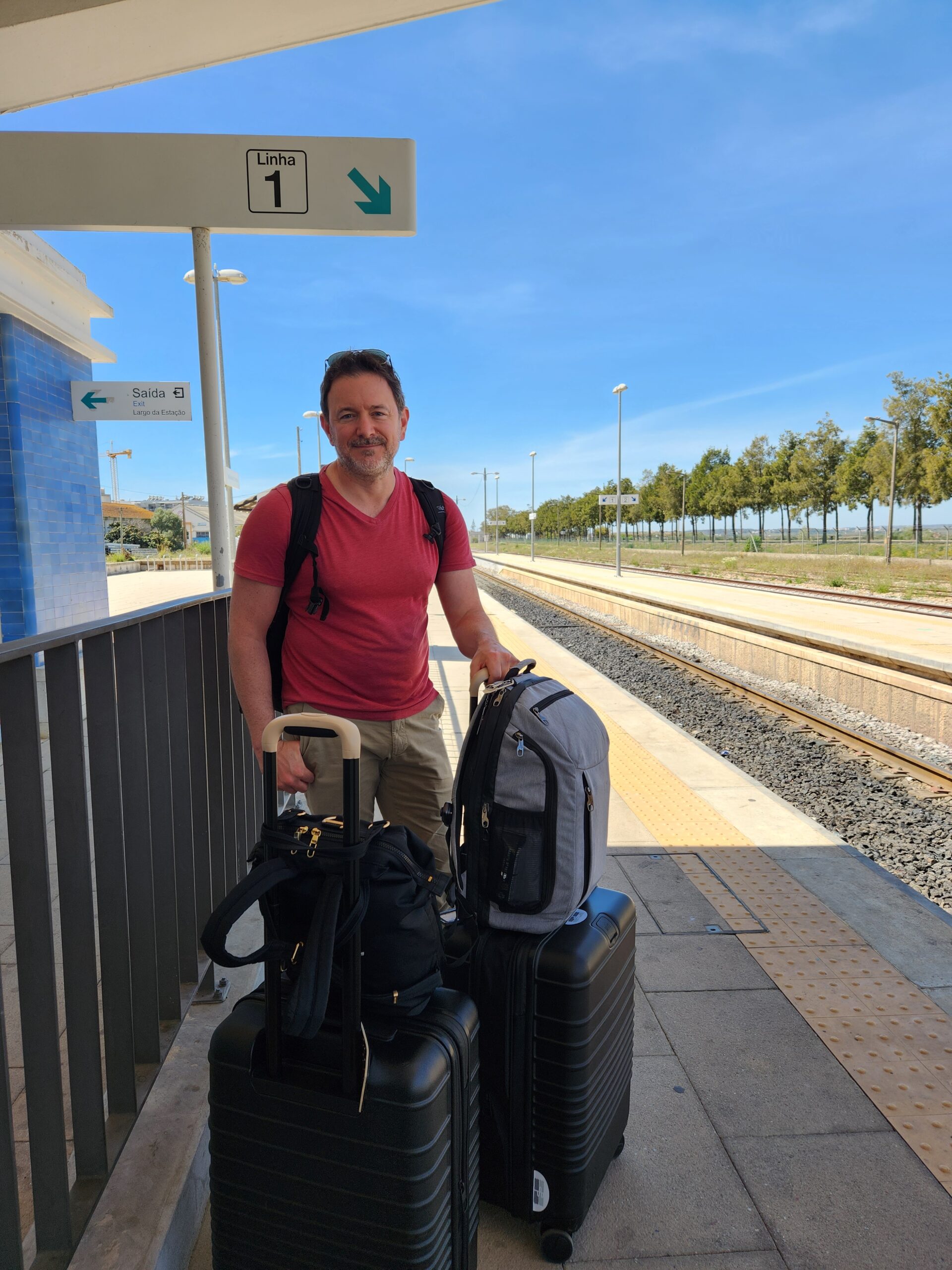
Fast travel often involves tight schedules, rushing to catch flights or trains, and constant packing and unpacking. This can result in increased stress levels and reduce the overall enjoyment of your trip.
In contrast to fast travel, slow travel provides a solution to decision fatigue by relieving the constant need to make choices about destinations, activities, and accommodations. By embracing a slower pace, travelers can experience reduced stress levels and fully immerse themselves in the present moment, allowing for a deeper appreciation and enjoyment of their journey.
Burnout
Many people have experienced burnout first hand including ourselves. For instance, after going on a six-week road trip out west, driving through 10 states, visiting numerous national parks, and changing locations every 3-4 nights, we reached our limit!
While the trip was amazing, towards the end, all we desired was to stop moving. It’s easy to feel disoriented or even lose track of where you are.
Remember, travel is not a race, but an opportunity to enrich your life through new experiences. Ultimately, the decision between fast travel and slow travel depends on your personal preferences and goals.
Fast Travel Can Be Expensive

Fast travel can be quite expensive, especially when it comes to accommodations. This usually means no price breaks and higher nightly rates. In our experience, opting for slow travel can save you a significant amount of money, particularly on short-term rentals. By staying for a month or even longer, you can often get discounts and the best prices.
Choosing fast travel also limits your options for accommodations. More often than not, you’ll find yourself staying in a hotel without a kitchen, which means you’ll have to eat out more frequently increasing your costs.
The frequency of your travels significantly affects your budget. Fast travel can result in higher transportation expenses and overall costs. While fast travelers may have the advantage of experiencing a wider range of cultures and locations in a shorter period of time, it is important to note that this convenience often comes with a higher financial cost.
If you’re retired, on a fixed income, or traveling on a budget, it’s important to consider the amount of money you’ll be spending. It’s a good idea to set a monthly budget before embarking on your travels. By planning ahead, you can make sure your expenses are manageable and avoid any financial strain.
The Benefits of Slow Travel
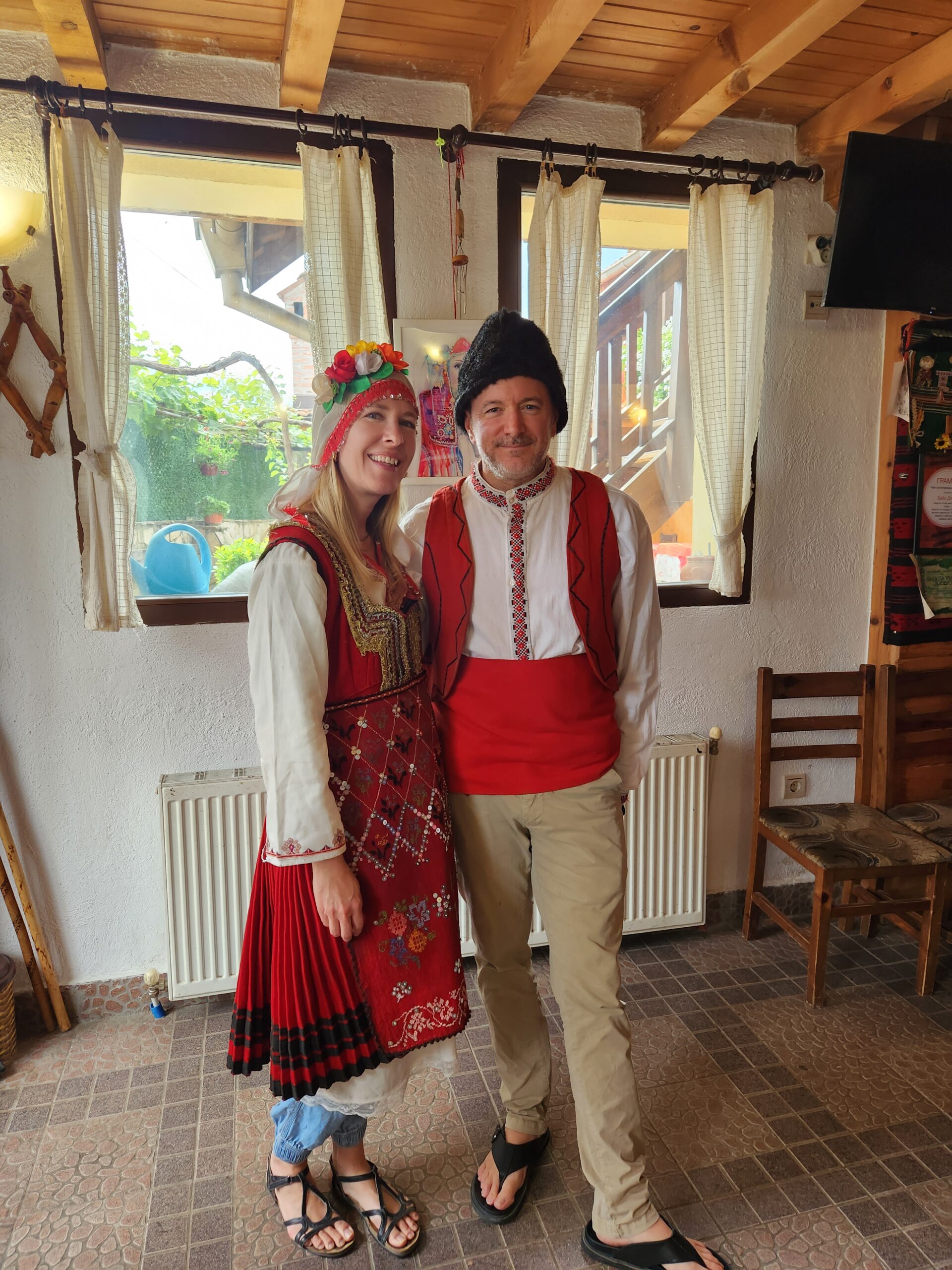
Slow travel allows you to fully immerse yourself in the local culture and experience it firsthand. By taking your time, you can build deeper connections with locals and gain a better understanding of their way of life. Instead of rushing through destinations, slow travel encourages you to embrace a more leisurely pace, allowing for meaningful interactions and authentic experiences.
Additionally, slow travel provides an opportunity for self-discovery, allowing you to reflect on your own values, beliefs, and priorities.
With slow travel, you have the flexibility to explore lesser known destinations and discover hidden gems that are often missed by fast-paced travelers. This allows for a more enriching and fulfilling travel experience as you get to truly connect with the people and places you encounter along your journey.
Cultural Immersion
Immersing yourself in the local culture allows you to learn about different traditions, customs, and ways of life. By taking the time to engage with locals, you can participate in local festivals, try traditional cuisine, and truly immerse yourself in the destination’s identity.
During our extended stays in Bulgaria, particularly in the charming town of Bansko nestled in the Pirin Mountains, we have had the privilege of fully immersing ourselves in the local scene. We’ve attended lively parties, soaked up the soulful melodies of Jazz Fest, and connected with fellow digital nomads at the Bansko Nomad fest.
Now, we have wonderful Bulgarian friends and eagerly look forward to reconnecting with them every year upon our return.
This cultural immersion not only broadens your perspectives but also fosters understanding and appreciation for diversity. It promotes tolerance and respect as you gain a deeper understanding of people from different backgrounds.
Slow travel provides the perfect opportunity to embrace this cultural immersion and create meaningful connections that will stay with you long after your journey ends.
Deeper connection with locals
By spending more time in one place during slow travel, you have the opportunity to form meaningful connections with locals. These connections go beyond a surface-level interaction and can lead to deeper friendships and cultural exchanges.
One of the advantages of forming these connections is the unique opportunities that may arise, such as being invited for a home-stay or joining in on local community activities. These experiences allow you to engulf yourself in the destination’s way of life and gain a firsthand understanding of its culture.
Moreover, developing friendships with locals can create lifelong bonds and open doors for future visits or collaborations. These connections not only enrich your travel experience but also contribute to a global network of friendships and cultural understanding.
Opportunity for self-discovery
Slow travel offers a unique space for personal growth, self-discovery, and gaining a deeper understanding of oneself. By immersing yourself in different cultures and taking the time to explore at your own pace, you have the opportunity to discover new passions, interests, or even redefine your life goals.
The slower rhythm of slow travel allows for reflection, introspection, and the chance to step outside of your comfort zone.
Whether it’s trying new cuisines, participating in local traditions, or engaging in meaningful conversations with locals, slow travel can truly be a transformative experience that helps you grow as an individual.
👉Keep Your Data Safe While Traveling: Sign up for Surfshark ✈
The Drawbacks of Slow Travel
While slow travel offers many benefits, it’s important to consider some of the drawbacks as well. One of the main drawbacks of slow travel is the significant time commitment it requires.
Unlike fast travel, which allows you to visit multiple destinations within a short span of time, slow travel involves spending more time in each place to fully experience it. This may not be ideal for travelers who get bored easily, require constant stimulation or are just ticking boxes off their travel list.
Additionally, slow travel can sometimes lead to boredom, especially if you’re accustomed to always being on the move. The slower pace may not appeal to those who thrive on excitement and constant exploration.
Another downside of slow travel is the limited number of destinations that can be visited within a given timeframe. Slow travel prioritizes quality over quantity, which means you may not be able to visit as many places during the same trip compared to fast travel.
Lastly, longer stays in each destination may result in missing out on visiting a larger number of places. While slow travel allows for a deeper immersion in a particular location, it also means sacrificing the opportunity to explore a wider range of destinations.
Time commitment
Slow travel is all about dedicating more time to each destination in order to fully immerse oneself in the local culture and experience everything it has to offer.
This pace may not be suitable for everyone, especially if you have limited vacation time or a remote job with time constraints on how long you can travel or be out of your home country.
Perhaps you find yourself on a work sabbatical and only have six months to travel full time. In this case, it is essential to figure out how much time you want to spend in each destination and what level of comfort you’re seeking. Prioritizing cramming it all in versus immersion and self reflection.
Possibility of boredom
While slow travel certainly offers the opportunity for a deeper connection with each destination, it’s important to acknowledge that some travelers may perceive it as monotonous or lacking excitement.
However, it’s worth noting that the level of excitement can vary depending on the location. For instance, if you find yourself in bustling cities like Paris, San Diego, or New York, you’ll more than likely have an abundance of activities to keep you entertained.
On the other hand, there may be instances where slow travel leads you to a sleepy small town or puts you in an off-season situation, as it happened during our three-month trip to Portugal.
In such cases, it’s worth noting that certain limitations may arise. Many bars and restaurants might be closed, and tour operators may not be running due to the time of year and weather conditions.
If you thrive on adrenaline and constant movement, fast travel may be the better choice for you. However, if you value immersing yourself in the local culture and taking the time to truly understand a destination, slow travel can offer a more enriching and meaningful experience.
Limited number of destinations
One disadvantage of slow travel is that you may not be able to visit as many destinations as you would with fast-paced travels. This means that checking off multiple places from your bucket list during one trip might be challenging. This is especially true if you are limited on time, like when on a sabbatical or gap year.
However, it’s important to consider what matters most to you. If exploring every street, museum, and restaurant in a city is your priority, slow travel allows you to truly get to know a place. It’s up to you to decide if seeing as many places or immersing yourself in one location is more important.
Slow travel is about savoring the experience and creating lasting memories, even if it means visiting fewer places overall.
Finding Your Ideal Travel Pace
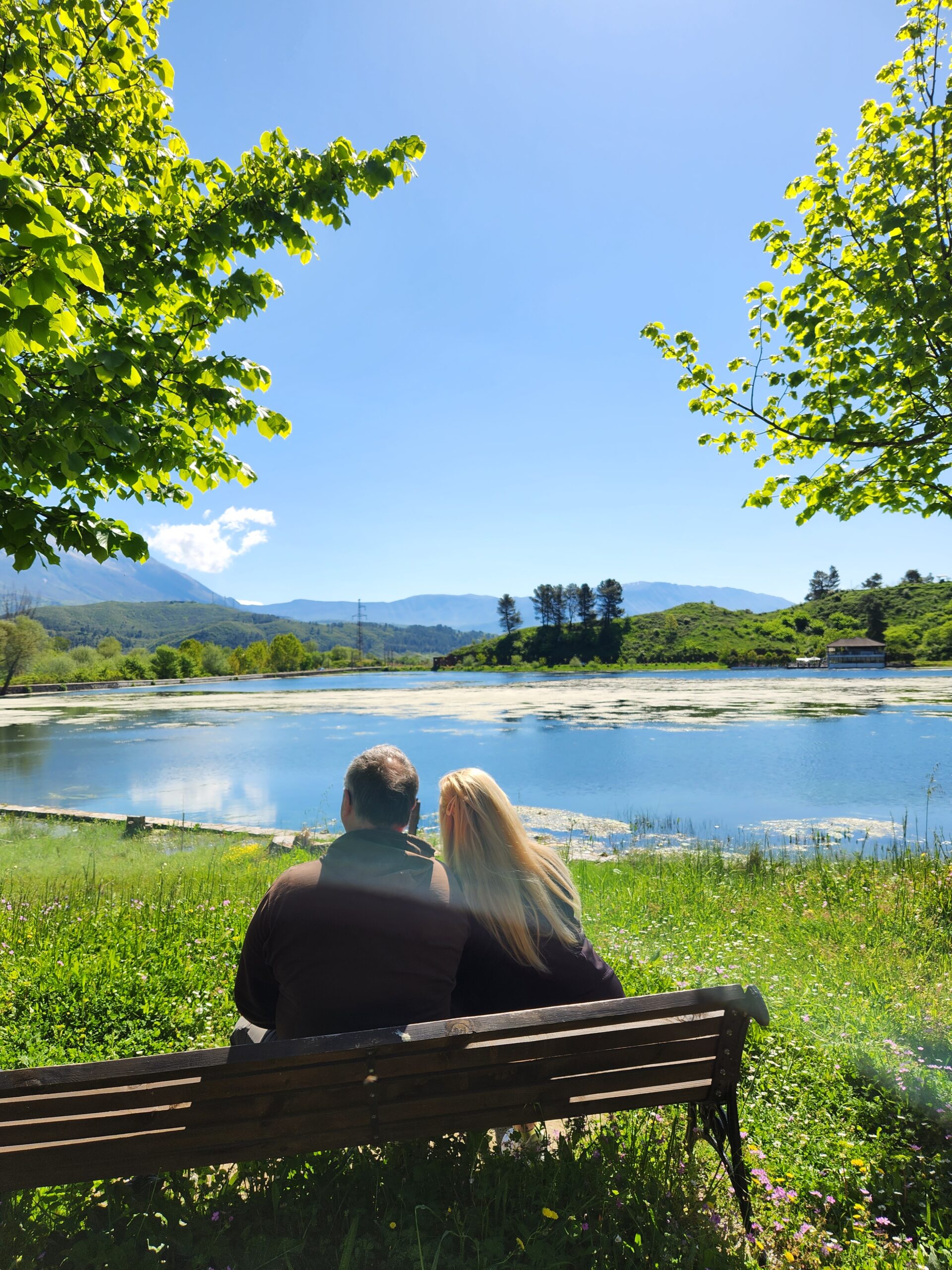
When deciding between slow travel vs. fast travel, it’s essential to consider your travel goals and personal preferences. If you value variety and the thrill of constant movement, fast travel may be your preferred choice.
However, if you seek a more relaxed and leisurely journey, where you can delve deep into a single location, slow travel is the way to go.
Evaluate your personal preferences
Consider if you enjoy having a packed itinerary with lots of activities and sightseeing, as fast travel often offers more opportunities for this type of adventure.
If relaxation and taking things at a slower pace are important to you, slow travel provides ample time for rest and rejuvenation during your trip.
You can take long walks, leisurely explore the local markets, and simply soak in the atmosphere without feeling rushed. Think about how much flexibility you prefer when traveling – fast travel allows for more spontaneity whereas slow travel requires careful planning.
Considering these factors will help you determine whether fast travel or slow travel is more suited to your preferences and travel style.
Create a balanced travel itinerary
When planning your travels, it’s worth considering a combination of both fast and slow travel elements in your itinerary. This allows you to experience the best of both worlds – quickly visiting popular tourist spots while also spending quality time in lesser-known locations.
We often use this strategy while moving from one slow travel destination to another. Since we are usually traveling by train or airplane we find ourselves in major cities. So we always use this opportunity to stay for a few days to acclimate if it is a new country, or sightsee.
Creating a balanced itinerary is key, ensuring that you allocate enough time for rest, even if your primary focus is on fast travel. Think about incorporating activities or experiences that align with your personal interests and passions. This will add an extra layer of fulfillment to your journey.
⚕ Are you covered with International Travel Medical Insurance? Get worldwide coverage with SafetyWing
Tips for maximizing the benefits of fast or slow travel
- Our first travel tip for maximizing the benefits of fast or slow travel is to plan ahead and research your destinations. This will allow you to make the most of your time, whether you’re traveling quickly or taking a leisurely pace.
- By knowing what attractions, sights, and activities are available in each location, you can prioritize your time and ensure that you don’t miss out on anything important to you.
- Another tip is to embrace spontaneity. Fast travel allows for more flexibility and last-minute decisions, so don’t be afraid to explore new places on a whim. On the other hand, slow travel offers several advantages compared to fast travel. By staying longer in a place, you open up numerous possibilities for spontaneous experiences and unexpected discoveries.
- Create a list of top priorities and focus on those, allowing yourself some room for detours along the way. This way, you can still indulge in the thrill of fast travel while making sure you don’t miss out on the things that matter most to you.
- For those who prefer to travel at a slower pace, consider incorporating one to two new or unique activities into your weekly itinerary. This approach will help break away from your usual routine, especially if you’re juggling a full-time job while on the road.
By incorporating new and exciting activities into your weekly routine, you can continue to explore and appreciate the world around you while maintaining a sense of balance and connection with your surroundings. We try to incorporate this style as much as possible while we slow travel around the world.
Which is right for you? Slow vs. Fast Travel
When choosing between fast travel and slow travel, it’s important to consider your travel goals and personal preferences. Both styles of travel have their advantages and drawbacks, so finding the right balance is key to a fulfilling and enjoyable travel experience.
Regardless of your chosen pace, it’s important to plan ahead and research your destinations. This will ensure that you make the most of your time and don’t miss out on any important attractions or experiences.
Embrace a balanced itinerary that caters to your preferences and enhances your overall travel experience. Remember, whether you prefer the fast-paced excitement of fast travel or the immersive depth of slow travel, finding your ideal pace will ensure that your journeys are memorable and fulfilling.
So, embrace your preferences and travel style, and create unforgettable memories on your next adventure.
Affiliate disclosure: As an Amazon Associate we earn from qualifying purchases. Some of the links may be affiliate links and if you purchase something using one of those links we may receive a small referral commission at no additional cost to you for any sign ups or purchases you may make.
Using our affiliate links (hotels.com, expedia.com, VRBO, Hertz, Chase Sapphire Prefered, Viator, etc.) supports great content on wanderinghartz.com and our Youtube channel.
None of the affiliate links cost you anything or increase the price you pay, and we may earn a small referral commission.
Or if you’re feeling generous you can buy us a much appreciated glass of wine (or whiskey)!
Cheers,
Happy Wandering!
Joel and Michelle
Frequently Asked Questions
Slow travel is a mindful and intentional way of exploring the world, allowing you to fully immerse yourself in the destinations you visit. It’s all about taking the time to connect with the local culture, savor the experiences, and appreciate the journey itself. This travel philosophy encourages you to be aware of your carbon footprint, and also promotes sustainability and responsible travel.
Fast travel offers the opportunity to maximize the number of destinations you can visit within a limited time frame. This means you can cover more ground and explore multiple places in a shorter period. The flexibility and convenience of fast travel also give you the freedom to plan your itinerary more efficiently, ensuring you get the most out of your trip.




![Top 12 Best Restaurants in Bansko You HAVE to Visit [2024]](https://wanderinghartz.com/wp-content/uploads/2022/08/20220713_Bankso-249-web-160x160.jpg)




